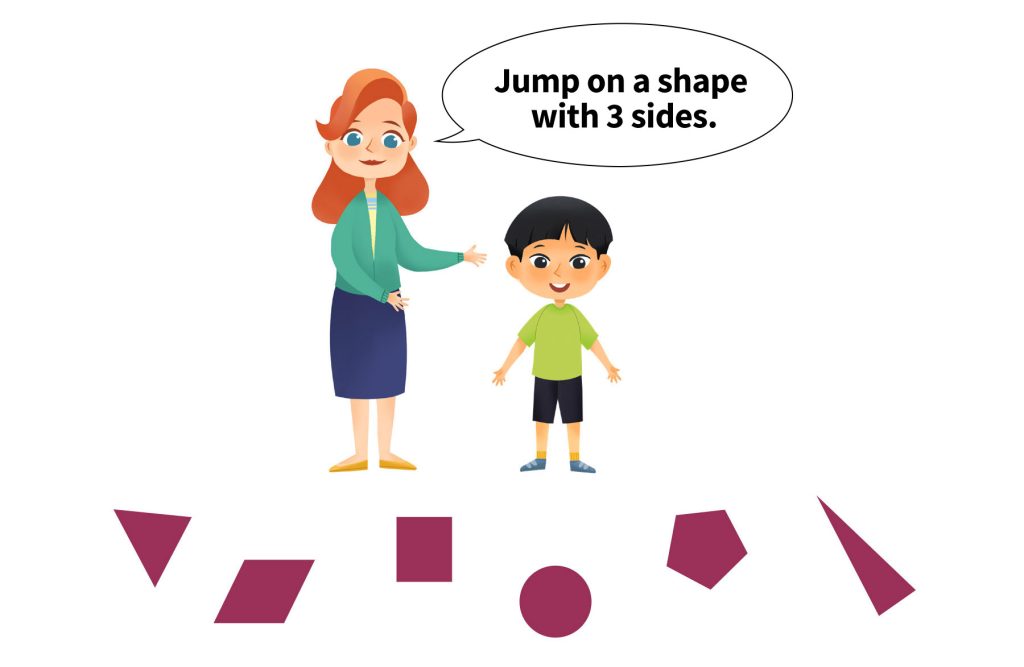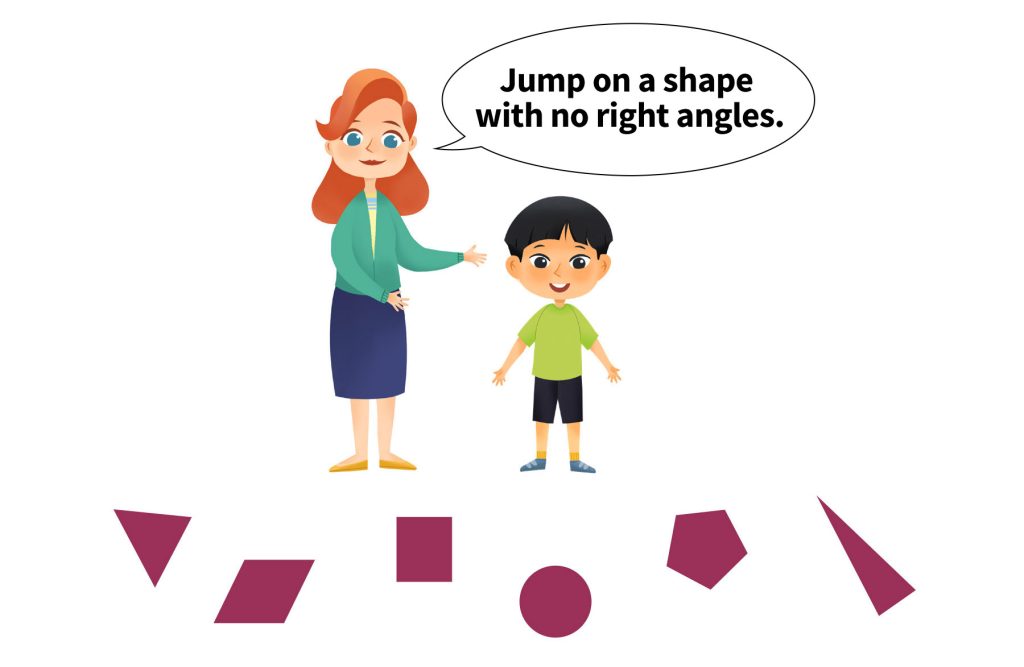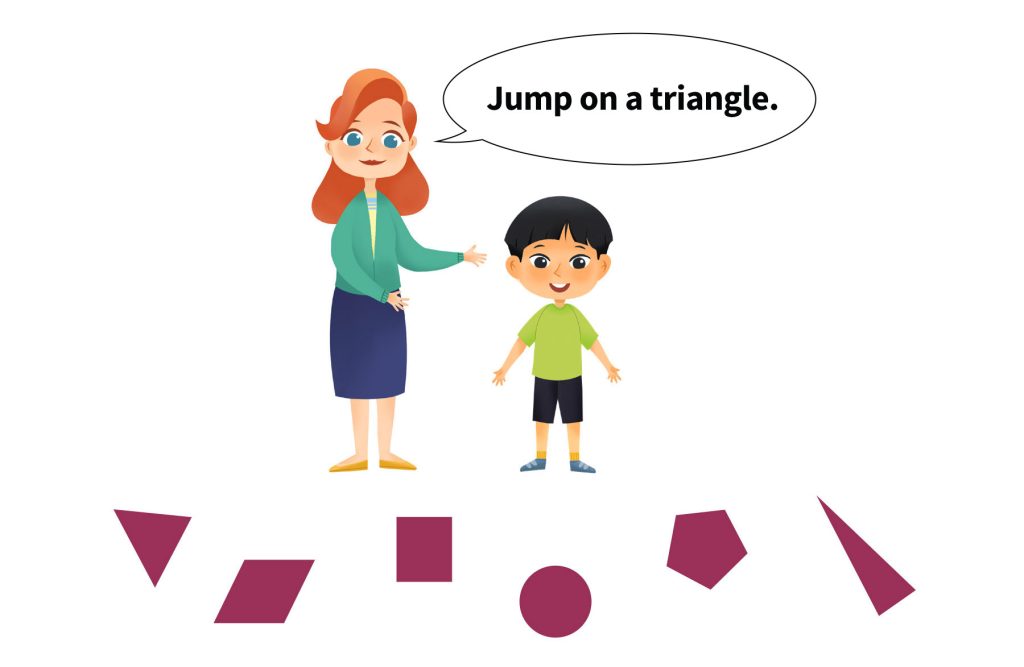There are 3 versions of Don’t Burn Your Feet.
Become familiar with all of them so you can easily move between versions to adapt to what children know about shape names and attributes.
Parts of Shapes
This version of Don’t Burn Your Feet is suitable for children who can recognize and name most shapes and learn about how a shape family (for example, triangles) has defining features of sides and angles.
Primary Objectives
- Recognize sides and angles (vertices) as distinct geometric features
- Count shapes’ sides and angles
- Name and describe attributes of shapes (for example, a square has four straight sides that are all the same length)

Shape Properties and Attributes
This version of Don’t Burn Your Feet is suitable for children who can correctly identify shapes and shape families on the basis of their defining properties (for example, a square has four equal-length sides).
Primary Objectives
- Use essential attributes to name and describe shapes (for example, a triangle has three straight sides and three angles)
- Understand shape properties, or the relationship between parts of shapes (for example, a square has four equal-length sides)
- Understand angle size (for example, bigger or smaller angle, right angle)

Shape Names
This version of Don’t Burn Your Feet is suitable for children who are starting to recognize and name familiar shapes (for example, circle, square, triangle, rectangle) and less familiar shapes (for example, hexagon, trapezoid).
Primary Objectives
- Identify familiar shapes (such as triangle, rectangle) in different orientations and positions
- Identify less familiar shapes (such as hexagon, trapezoid) in different orientations and positions
- Distinguish between true examples and non-examples of shapes, which are visually similar to a shape but are missing some defining characteristics of shapes
